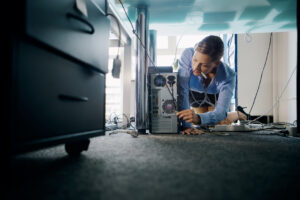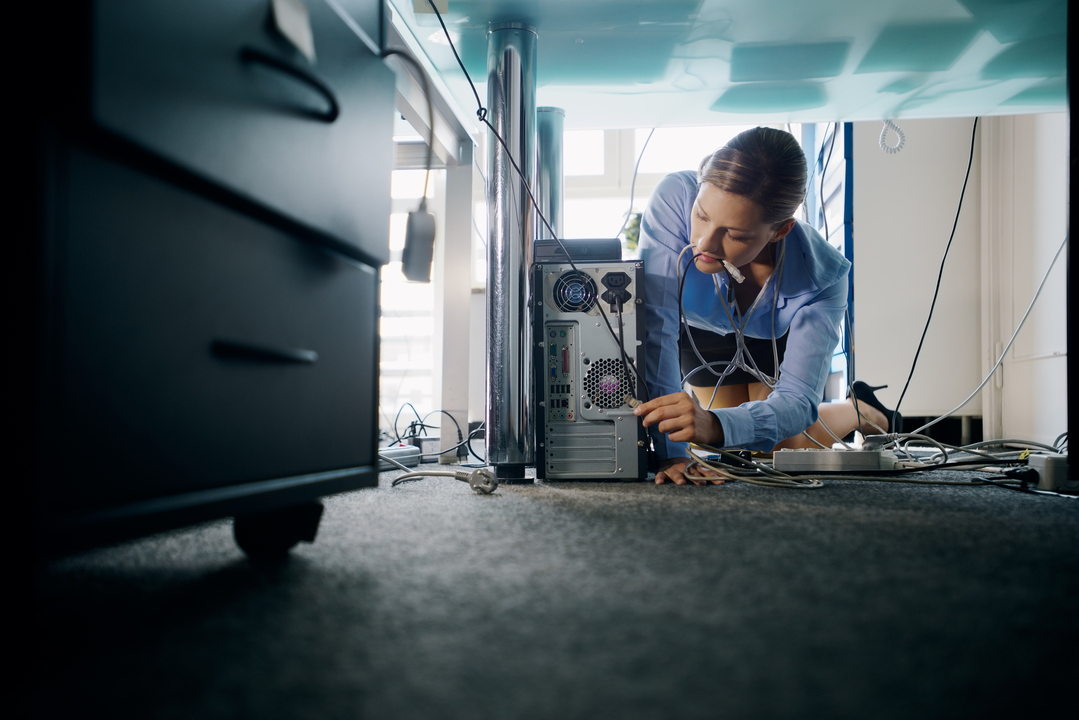8 Electrical Hazards in the workplace
8 Electrical hazards in the workplace; you should check now.
Find out how to keep employees safe from electrical hazards in the workplace.
Get to know the 1989 Electricity at Work Regulations and how they influence your company.
Find typical electrical dangers, such as broken appliances or outlets that are too full.
Even though electrical hazards in the workplace might not appear to be a major concern at your company, it is still important to take safety precautions. Fires, electric shock, or electrocution—caused by improperly utilised or poorly maintained electrical equipment—can result in serious injuries or even death. Workplace electrical dangers and their management are detailed in this guide.

Why not consider using OpsPal to help you remember to complete checks and ensure you stay compliant?
In the workplace, what are the rules regarding electricity?
Electrical safety is an important aspect of providing a healthy and safe work environment for companies.
The Health and Safety Executive receives reports of over 1,000 electrical incidents at work each year, with 30 individuals losing their lives as a result of these dangers.
All electrical equipment must be safe for employees to use, according to the Electricity at Work Regulations (1989). A competent individual should verify its accuracy, ensure its correct installation, and conduct routine inspections and maintenance.
In order to identify potential electrical dangers, employers must conduct a risk assessment. Who could suffer harm from electrical hazards? How was the risk level determined? What measures were taken to control the risk? All of this should be detailed in the evaluation. Furthermore, you’re obligated to educate your employees on how to safely handle electricity on the job.
These are the types of jobs and checks we would advise you to put into OpsPal, so it reminds you when they need to be checked. Read 10 reasons why we built OpsPal here
Employers must also report incidents and specific injuries to the Health and Safety Executive.
There should be zero tolerance for electrical risks in the workplace because noncompliance can result in fines for employers.
Which electrical risks pose the greatest risk of injury?
Electrical dangers mostly cause the following injuries:
Death by electrical current.
Electrical burns happen when current flows into and out of the body.
A person can get an electric shock if they come into contact with an unground electrical device or a live wire.
Secondary injuries that develop as a result of the impact, like a person being flung to the floor or falling from a height.
Eight typical electrical risks
The following are some of the most prevalent electrical risks in the workplace; however, there are many more:
1. broken machinery and power tools
The use of power tools in buildings that are electrically damaged is quite risky. Until they are repaired and certified by an expert, tools and equipment that are broken should not be used.
2. Electrical wires that are cut, twisted, or otherwise not properly protected
The electrical cords that come with electrical devices have live wires that are well-insulated. Electric shock or fire could result from a frayed or broken cable that exposes a live wire. Do not use tape to temporarily mend damaged cables; instead, report the issue and have a skilled technician fix it.
3. Being near water or having wet hands while using electrical equipment
The risk of electrocution is greatly increased when using electrical equipment in close proximity to water or when operating it with wet hands. After becoming wet, the equipment should be inspected by a licenced electrician before it may be used again.
4. power lines that run through the sky
A person runs the risk of serious burns or even electrocution due to the high voltage of electrical cables hanging from the sky. It is advised to keep a minimum distance of 10 feet from overhead power lines and any equipment nearby if employees are operating in close proximity to these wires. Place safety barriers and warning signs to deter people from approaching materials and equipment that could suffer electrical damage.
5. Using new fuses incorrectly
To avoid overheating, always use the correct fuse when installing or changing a fuse. To determine the wattage and the appropriate fuse for your appliance, go to the handbook or the label.
6. sockets that are overloaded
The workplace wiring can look like a tangled web of plugs and extension cords due to the abundance of laptops and other devices that require constant power. A single appliance, like a computer display or printer, should ideally have its own power outlet.
A fused, multi-way bar extension cord with surge protection is preferable to a simple block adapter when many appliances need to be powered from a single outlet.
Avoid exceeding the extension lead’s maximum electrical current rating by connecting too many appliances at once. It is dangerous to connect extension cords to each other.
7. Equipment-related smoke and odours
Be on the lookout for electrical hazards such as the smell of burning plastic, sparks, or smoke emanating from electrical outlets, appliances, or plugs. If any of your appliances suddenly stop working, it’s important to disconnect the power to them until an expert can come help you.
8. Inadequate coupling
You must earth or ground all electrical equipment and devices. If you don’t, electrocution could happen to you. Have a trained professional inspect and certify all electrical equipment at regular intervals.
There are electrical dangers in most workplaces. Most offices include a lot of electrical equipment, which can put employees at risk of burns, shocks, and fires.
Electrical risk assessments can be completed on OpsPal, and you can then have records to prove when and who read them.
When it comes to electrical safety on the job, employers have a responsibility to educate their staff.
Workers should be reminded to stay vigilant for potential dangers and to notify a supervisor or higher-up if they notice any malfunctioning machinery. Use of the equipment must stop immediately in order to have an expert inspect it.
OpsPal could help you ensure the following is done when needed:.
Verify that workers have proper training on the safe operation of electrical equipment.
Make sure there are enough sockets so they don’t get overwhelmed.
To make room for cleaning, turn off and unplug all electrical devices.
At the conclusion of each day, make sure to switch off all appliances.
People could trip or fall due to trailing cables, so be careful.
It is imperative that all personnel handling electricity get the necessary training.
To prevent electrical equipment from getting wet, make sure the flooring and work surfaces are always dry.
A three-foot space should always be maintained in front of every electrical panel.
Avoid running electrical lines across heavily populated areas, over entrances, or under carpets to prevent accidents.
At OpsPal, we are wholeheartedly dedicated to aiding businesses in their endeavours. Our digital solutions are meticulously designed to simplify task management, enhance collaboration, and drive unparalleled efficiency.
Whether you are steering the ship in a professional services business, retail store, factory, or university, effective management remains the lynchpin of success. By implementing these strategies, you can forge a meticulously organised, high-performance work environment that propels your business to new heights.
Remember, success is an accumulation of well-executed tasks, one at a time. With the right strategies and tools, you can transform task management into a potent asset for your business’s growth.
Book in here so we can show you how to digitise the whole process.












